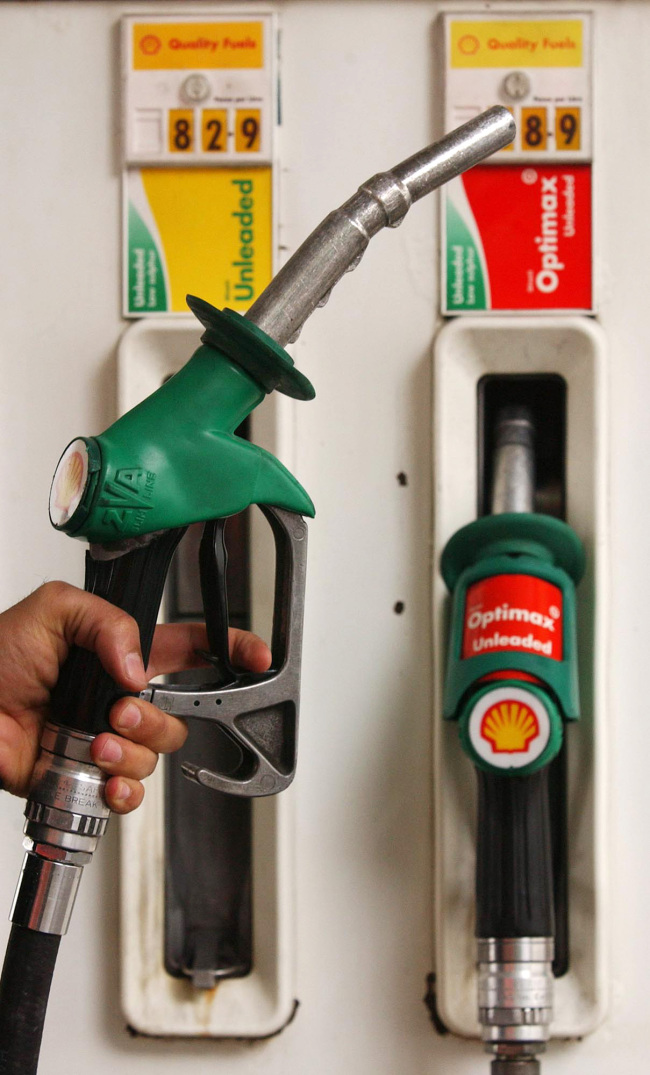Goldman Sachs said U.S. oil prices need to trade near $40 a barrel in the first half of this year to curb shale investments as it gave up on OPEC cutting output to balance the market.
The bank cut its forecasts for global benchmark crude prices, predicting inventories will increase over the first half of this year, according to an emailed report. Excess storage and tanker capacity suggests the market can run a surplus far longer than it has in the past, said Goldman analysts including Jeffrey Currie in New York.
The U.S. is pumping oil at the fastest pace in more than three decades, helped by a shale boom that’s unlocked supplies from formations including the Eagle Ford in Texas and the Bakken in North Dakota. Prices slumped almost 50 percent last year as the Organization of Petroleum Exporting Countries resisted output cuts even amid a global surplus that Qatar estimates at 2 million barrels a day.
“To keep all capital sidelined and curtail investment in shale until the market has re-balanced, we believe prices need to stay lower for longer,” Goldman said in the report. “The search for a new equilibrium in oil markets continues.”
The bank cut its forecasts for global benchmark crude prices, predicting inventories will increase over the first half of this year, according to an emailed report. Excess storage and tanker capacity suggests the market can run a surplus far longer than it has in the past, said Goldman analysts including Jeffrey Currie in New York.
The U.S. is pumping oil at the fastest pace in more than three decades, helped by a shale boom that’s unlocked supplies from formations including the Eagle Ford in Texas and the Bakken in North Dakota. Prices slumped almost 50 percent last year as the Organization of Petroleum Exporting Countries resisted output cuts even amid a global surplus that Qatar estimates at 2 million barrels a day.
“To keep all capital sidelined and curtail investment in shale until the market has re-balanced, we believe prices need to stay lower for longer,” Goldman said in the report. “The search for a new equilibrium in oil markets continues.”

West Texas Intermediate, the U.S. marker crude, will trade at $41 a barrel and global benchmark Brent at $42 in three months, the bank said. It had previously forecast WTI at $70 and Brent at $80 for the first quarter.
Goldman reduced its six- and 12-month WTI predictions to $39 a barrel and $65, from $75 and $80, respectively, while its estimates for Brent for the period were cut to $43 and $70, from $85 and $90, according to the report.
“We forecast that the one-year-ahead WTI swap needs to remain below this $65 a barrel marginal cost, near $55 a barrel for the next year to sideline capital and keep investment low enough to create a physical rebalancing of the market,” the bank said.
Goldman estimates there’s sufficient capacity to store a surplus of 1 million barrels a day of crude for almost a year. It expects the spread between WTI and Brent to widen in the next quarter as discounted U.S. crude prices and “strong margins lead U.S. refineries to export the glut to the other side of the Atlantic.”
The Brent-WTI spread will average $5 a barrel in 2016, according to the bank. The gap was at $1.50 Monday.
Goldman doesn’t expect that Saudi Arabia or other core members of OPEC will cut production, versus its previous expectation that the group would help balance the oil market in the second half of 2015, according to the report.
“This is anchored on our expectation that the slowdown in U.S. shale oil production in second-half 2015 will be sufficient to clear the market overhang and the threat of capital being quickly redeployed to restart U.S. production growth,” it said.
OPEC, which pumps about 40 percent of the world’s oil, has stressed a dozen times in the past six weeks that it won’t curb output to halt the slump in prices. The group decided to maintain its collective quota at 30 million barrels a day at a Nov. 27 meeting in Vienna. Production averaged 30.24 million barrels a day in December, according to a Bloomberg survey. (Bloomberg)
-
Articles by Korea Herald



![[AtoZ into Korean mind] Humor in Korea: Navigating the line between what's funny and not](http://res.heraldm.com/phpwas/restmb_idxmake.php?idx=644&simg=/content/image/2024/04/22/20240422050642_0.jpg&u=)
![[Exclusive] Korean military set to ban iPhones over 'security' concerns](http://res.heraldm.com/phpwas/restmb_idxmake.php?idx=644&simg=/content/image/2024/04/23/20240423050599_0.jpg&u=20240423183955)



![[Graphic News] 77% of young Koreans still financially dependent](http://res.heraldm.com/phpwas/restmb_idxmake.php?idx=644&simg=/content/image/2024/04/22/20240422050762_0.gif&u=)

![[Herald Interview] Why Toss invited hackers to penetrate its system](http://res.heraldm.com/phpwas/restmb_idxmake.php?idx=644&simg=/content/image/2024/04/22/20240422050569_0.jpg&u=20240422150649)





![[Exclusive] Korean military to ban iPhones over security issues](http://res.heraldm.com/phpwas/restmb_idxmake.php?idx=652&simg=/content/image/2024/04/23/20240423050599_0.jpg&u=20240423183955)



![[Today’s K-pop] Ateez confirms US tour details](http://res.heraldm.com/phpwas/restmb_idxmake.php?idx=642&simg=/content/image/2024/04/23/20240423050700_0.jpg&u=)